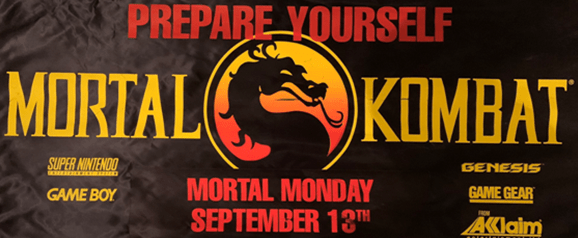
To celebrate the simultaneous worldwide release of Mortal Kombat (Midway, 1992) on home consoles, 13 September 1993 was dubbed “Mortal Monday”. Mortal Kombat’s move to home consoles impacted not only the ongoing “Console War” between SEGA and Nintendo but also videogames forever thanks to its controversial violence and I think that it’s only fitting that we continue celebrating this influential fighting series every September 13th.
Released: 21 September 1997
Director: John R. Leonetti
Distributor: New Line Cinema
Budget: $30 million
Stars: Robin Shou, Talisa Soto, Brian Thompson, James Remar, Sandra Hess, Lynn Red Williams, Musetta Vander, and Reiner Schöne
The Plot:
Despite Liu Kang’s (Shou) victory in the Mortal Kombat tournament, Outworld emperor Shao Kahn (Thompson) bends the Elder Gods’ sacred rules and assaults Earthrealm. With Lord Rayden (Remar) weakened, Liu Kang and his friends have seven days to recruit new allies and learn the key to stopping Kahn’s invasion before all of Earthrealm is annihilated.
The Background:
As I’ve touched on before, competitive fighting games were all the rage in the nineties thanks to the many iterations of Street Fighter II: The World Warrior (Capcom, 1991). To compete with this title, developers Ed Boon and John Tobias, inspired by movies like Enter the Dragon (Clouse, 1973), Bloodsport (Arnold, 1988), and Big Trouble in Little China (Carpenter, 1986), created a tournament fighter that changed the genre thanks to its ultra-violent content. It was producer Lawrence Kasanoff who saw Mortal Kombat’s potential as a multimedia franchise and it was thanks to him, and director Paul W. S. Anderson, that we got the cult hit Mortal Kombat (ibid, 1995), which was both surprisingly profitable, widely recognised as one of the best videogame adaptations, and a principal influence on my PhD thesis. Unfortunately, you can’t talk about Mortal Kombat without mentioning its universally derided sequel; rather than smartly infuse the relatively simply videogame lore with filmic inspirations, Kasanof aimed to go bigger and more spectacular, stuffing the script with as many characters and references to the source material as possible in an effort to cater exclusively to Mortal Kombat’s growing fanbase. Paul W. S. Anderson passed on the director’s chair and only two members of the original cast returned for the sequel, which was full of cringe-worthy performances and terribly rendered CGI as New Line Cinema didn’t actually release the finished version of the film. This was reflected in the film’s dismal $51.3 million box office gross and scathing critical reception; everything from the confused narrative, underwhelming fight scenes, and the laughably bad acting has been highlighted as a negative, and rightfully so. Despite the film’s universally negative reception, Kasanoff’s multimedia ventures continued with the live-action prequel, Mortal Kombat: Conquest (1998 and 1999) but, while New Line Cinema initially had plans for a third film, the teases for it were cut from Annihilation and it remained in Development Hell for decades until the franchise was finally rebooted in 2021.
The Review:
I was such a huge fan of the original Mortal Kombat movie as a kid, and even now I still regard it as probably the best live-action videogame adaptation ever made. That’s hard for me to say as I loathe what Anderson did to the Resident Evil franchise (Capcom/Various, 1996 to present) with his filmic endeavours (Anderson/Various, 2002 to 2016) but it’s true; I remember renting it as a kid, basing an entire birthday around watching it, and even the day I bought the VHS copy from a market stall. My anticipation for the sequel was so high and it seemed like we were waiting for so long for it to come out but, in reality, it was only a couple of years. When Mortal Kombat: Annihilation finally did come out, all I remember seeing of it was the poster and that was enough to get me excited as I was eager to see that cliff-hanger ending resolved, but I missed out on seeing it at the cinema as it wasn’t very easy to get to the cinema at the time, so I didn’t see it until it came out on VHS some time later. I don’t remember what I thought to the film as a kid; I was probably just super happy to see all my favourite Mortal Kombat characters brought to life and given more screen time, but I do have a vague memory of thinking it wasn’t as good as the original film and, as I’ve gotten older and rewatched and even academically studied the film, that opinion has only grown stronger.
Mortal Kombat: Annihilation opens with a quick recap of the last film; scenes of Mortal Kombat’s best fights and memorable moments (purposely cut to excise the original actors from the footage) play over Rayden’s narration as he brings us up to speed and we’re brought back to the ending of the first movie, but with some noticeable and jarring changes. You’ll spot these immediately since James Remar sounds nothing like Christopher Lambert (still the quintessential Raiden for me and it baffles me that he hasn’t done more voice work for the character, at least) and definitely doesn’t look anything like him. Sporting an entirely new outfit and a far more obvious wig, Remar fails to convey the same enigmatic presence as his predecessor but it doesn’t end there; Liu Kang is also wearing a completely different outfit and both Johnny Cage (Chris Conrad) and Lieutenant Sonya Blade (Hess) have been completely recast. Even more egregious is that Cage has his trademark sunglasses back, despite the fact they were crushed by the monstrous Goro (Tom Woodruff, Jr./Kevin Michael Richardson) in a pretty memorable sequence in the last film. Still, none of that really compares to the absolutely atrocious visual effects slashing across the sky and the arrival of Outworld Emperor Shao Kahn. Originally portrayed as a gigantic semi-translucent, monstrous figure voiced by the immortal Frank Welker and bursting from the Temple of Light, Kahn is now a far less intimidating muscular brute garbed in a Halloween costume and surrounded by a gaggle of porn stars, Gladiators, and cos-players and immediately lacks all of the subtle menace and nuance of Cary-Hiroyuki Tagawa’s menacing Shang Tsung.
Still, let’s continue on. Like the last film, our main character is Liu Kang (thankfully still portrayed by the endlessly likeable and charismatic Robin Shou, whose martial arts prowess is one of Annihilation’s few highlights even if his acting ability isn’t quite enough to carry this mess of a script), whose elation at having overcome his personal demons, avenged his brother, and safeguarded Earthrealm from Outworld is immediately cut short by Shao Kahn’s arrival. Although he learned to trust in Rayden in the last film, and that all the legends he grew up hearing about were true, despite his scepticism, Liu Kang is angered that their victory, which the Elder Gods decreed would keep Earthrealm safe from invasion for at least one generation, was all for nothing thanks to Shao Kahn finding a loophole in the rules. Liu Kang’s anger only increases when Cage is unceremoniously killed right before his eyes, and his first instinct is to avenge his fallen friend, only to be told that he’s “no match for Kahn” and must embark on a perilous journey of self-discovery to find the power necessary to overcome the Emperor. Rayden splits the heroes into teams for this mission, and Liu Kang’s demeanour (but not his crotch) is softened by the presence of the beautiful Kitana (Soto), with whom he had a flirtatious romance in the last film. Here, they are ready to take the next step in their relationship, but this is suddenly ripped away from Liu Kang when the Edenian princess is kidnapped by the returning Scorpion (J. J. Perry/Ed Boon). Fraught with guilt over failing to keep her safe, Liu Kang is guided towards the elusive Nightwolf (Litefoot), a Native American mystic who endeavours to teach him to harness his “Animality” by undergoing a series of tests designed to focus his mind, body, and spirit for his inevitable fight against Shao Kahn.

Although she has a new face, wardrobe, and haircut, the first thing you’ll notice about Sonya here is that she’s reverted back to being an angry, embittered, distrustful, and overall unlikeable character. She’s absolutely devastated when Cage is murdered and desperate to make Shao Kahn pay, but blinded by her grief and rage so Rayden has her journey to some facility to reunite with her partner, Major Jackson “Jax” Briggs (Lynn red Williams). Initially, Sonya rejects this idea as she doesn’t want to lose anyone else she cares about, and she carries a chip on her shoulder throughout the film and basically has to learn the same lessons about trusting others as she did in the first movie. While Mortal Kombat: Annihilation is littered with chaotic and random fight scenes, at least Liu Kang and Rayden are focused on opposing Shao Kahn; Sonya has no chance against the Emperor but has no other clear antagonist to focus on since Kano (Trevor Goddard) is dead, meaning she’s forced to settle for “leftovers” like Cyrax (J. J. Perry) and Ermac (John Medlen). Thankfully, she’s partnered up with Jax; for a former American Football player and Gladiator, Williams does a really good job in this role and has a down-to-earth, relatable charisma to him. As an everyman character who has no idea what’s going on, he’s a natural conduit for exposition and it’s fun seeing him react to the bizarre events happening all around him. Jax’s “thing” in this movie is that he struggles with self-confidence; to that end, he underwent a surgical procedure to graft cybernetic prosthetics to his already muscular arms to give him a power boost. Jax’s arms are a valuable asset, saving his life and even allowing him to cause shockwaves by hitting the ground, but Rayden and the others teach him that they’re merely a tool and that his true power comes from within. Unlike Sonya, Jax ends up squaring off with a clear rival in the finale, the half-human centaur Motaro (Deron McBee) and, in the process, overcomes his insecurities and sheds his mechanical arms to deliver a pretty cathartic beatdown on Kahn’s monstrous minion.
While she was mostly relegated to an alluring figure and a secondary mentor in the first film, Kitana takes on a much larger role in the sequel. Although she only gets a couple of fight scenes and ends up locked in a cage for her man to come and rescue her, Kitana is right at the forefront of the plot since her mother, Queen Sindel (Vander), is the key to Shao Kahn’s illegal invasion. Stunned to find her mother alive (and in perfect physical health), Kitana is even more heartbroken to find that Sindel has been corrupted by Kahn’s influence and that her resurrection has allowed him to bring destruction to Earthrealm. Confused by this turn of events, Rayden consults with the Elder Gods who advise him that the love Kitana has for her mother can break Kahn’s spell, restore her, and undo the damage caused and he blindly follows their instructions, even sacrificing his status as a Thunder God (and debuting an absolutely dreadful new appearance in the process that is anything but Raiden) in order to reunite the two. Unfortunately, they’ve all been duped by the corrupt Elder God Shinnok (Schöne) and lured into a trap; Sindel laughs in her daughter’s face when she tries to profess her love for her and Rayden is left powerless, resulting in his death at Kahn’s hands and Kitana having to battle her mother in the finale. Unfortunately, neither Talisa Soto nor Musetta Vander have the acting ability to pull any of this off; both are obviously stunningly beautiful, but Kitana and Liu Kang have all the chemistry of a wet paper bag and Sindel is little more than a cackling pantomime villain. Remar also suffers in this regard; if he’s trying to channel Lambert’s stoic playfulness, he fails miserably and just seems bored and confused, even during his terribly shot fight against the Reptiles (Mark Caso, Paul Driver, and Sultan Uddin).
However, they’re all Oscar-winning actors compared to the absolutely dreadful Brian Thompson. I actually like Thompson; he always plays big, brutish thugs really well when he crops up in supporting roles but he has neither the size nor the charisma to impress as Annihilation’s lead antagonist. Essentially coming across as a poor man’s Kurgan (Clancy Brown; a fitting comparison, for sure), Shao Kahn is a loud, arrogant bully with an overdeveloped sense of grandeur and a taste of pomp and ceremony. Upon arriving on Earthrealm, he attempts to establish himself as a meaningful threat by surrounding himself with his generals and killing Cage, but is easily outmatched by Rayden. Indeed, Rayden is only stopped from killing Kahn right then and there because the Emperor takes Cage as a hostage, and Rayden is so stunned to see one of his chosen mortals killed that he doesn’t even make good on his promise to “take” Kahn’s generals from him. While the heroes go off on their confusing missions, Kahn returns to his throne room and is content to allow the seven-day merger of Outworld and Earthrealm to take place without his direct involvement. However, if his cheap plastic armour and rubbish skull helmet didn’t diminish Kahn’s threat enough, his contentious relationship with his father, Shinnok, certainly does. Chastised at every turn by the corrupt Elder God, Kahn quickly turns from a brutish tyrant to a meek child desperate to impress his father, and he absurdly takes his anger out on his generals at every opportunity. Even this doesn’t make sense; why kill your underlings when you’re in the middle of an invasion? And Kahn’s lashing out at Rain for failing to kill Kabal and Stryker is super weird considering Shinnok chewed him out for sparing Rayden. Imagine if Shinnok had just killed Kahn for that, as he does his general? Absolutely ridiculous! Completely devoted to his witch-like queen and confidant in his victory, Kahn allows his troops to wreak havoc across the globe (though we barely see any of this) and is fixated only on killing Rayden and conquering Earthrealm in order to earn his father’s respect. Where Shang Tsung was a scheming, charismatic sorcerer, Shao Kahn is little more than a thug with delusions of grandeur and it’s hard to picture anyone bending the knee to him since he exhibits little of the threat that Tsung did beyond his admittedly impressive physical stature.
The Nitty-Gritty:
Contrary to my usual everyday mindset, I don’t actually like to be too negative in my reviews, or when watching movies or playing videogames or whatever, and when discussing Mortal Kombat: Annihilation for my PhD thesis I tried to come at it with a positive perspective. Primarily, this involved praising it for capturing the madcap nonsense of the franchise’s latter-day releases, like Ultimate Mortal Kombat 3 (Midway Games, 1995) and its successor, Mortal Kombat Trilogy (ibid, 1996). These were fighters crammed full of characters, bonkers finishing moves, and which tried to mash together all the established lore and many of the contradictory characters, which made for a pretty chaotic gaming experience but one full of variety (even if many characters were just palette swaps and many of the violent finishing moves were pretty lazy). Still, if all you cared about was seeing your favourite Mortal Kombat characters in one game, these two titles had you covered and, in that respect, Mortal Kombat: Annihilation delivers in terms of fan service. The plot is also a pretty close approximation of Mortal Kombat 3’s (Midway, 1995), which depicted Kahn resurrecting Sindel and leading an illegal invasion of Earthrealm, and the iconic theme song by The Immortals is back and has even been tweaked to include the new characters seen in this film. Unfortunately, that’s about where the praise ends for, while Mortal Kombat: Annihilation does feature a bunch of characters, hardly any of them have any personality or nuance to them. Instead, basically every character that isn’t a lead protagonist or antagonist is treated as badly as Scorpion (Chris Casamassa) and Sub-Zero (François Petit) were in the first film. Rain (Tyrone Wiggins) is here, and even gets a few lines, but is he a conflicted Edenian prince with control of water and lightning? No, he’s just another ninja who gets smashed into a fiery pit for angering his master.
An extremely poor rendition of Baraka (Dennis Keiffer) randomly shows up, looking more like a guy in a rubbery Halloween costume than a vicious mutated cannibal, and Mileena (Dana Hee) even makes a brief appearance to wrestle around in the mud with Sonya but is she depicted as Kitana’s bloodthirsty clone or stepsister? Is she bollocks. Hell, Sonya even mistakes her for Kitana at first, which makes absolutely no sense as she doesn’t look anything like Kitana; maybe if she’d also been played by Talisa Soto, and Jade (Irina Pantaeva) and Baraka had been dropped from the script, Mileena could’ve played a bigger role but, as is, she’s just some hot chick in a magenta outfit for Sonya to fumble around with. This even carries over to the finale, when Sonya takes on Ermac (who has just one line and isn’t even named), who randomly splits into two (actually this is Noob Saibot (J. J. Perry), who also isn’t named and is given no context) to double-team her but why the hell should we care when we don’t even know who these masked morons are? Still, at least these losers feature onscreen; “two of Earth’s warriors, Kabal and Stryker” aren’t even given that luxury and this absolutely ugly looking CGI monstrosity gets way more screen time than it deserves. Sadly, this continues with some of my favourite Mortal Kombat characters. Sub-Zero (Keith Cooke) makes a dramatic return, now sporting his bad-ass eye scar and actually being the younger brother of the previous one. He comes sliding in to save Liu Kang from Smoke (Ridley Tsui), who’s actually a combination of Smoke and Sektor, and deliver some clunky exposition about how the cyborg was reprogrammed by Kahn to target Liu instead of him (as in Sub-Zero). Why was Smoke going after Sub-Zero? Does he have any relation to Cyrax? Was he Sub-Zero’s former friend turned into a cyborg against his will and did Sub-Zero even care that he just killed his friend? None of these questions are answered as the film pauses for a pretty awesome battle between Sub-Zero and Scorpion which, despite being something I and many Mortal Kombat fans missed from the first film, also makes little sense as there’s no reason given in the film for the animosity between the two beyond the filmic Scorpion being evil and Sub-Zero trying to protect Kitana. Even crazier is the part where, after losing Kitana to Scorpion, Sub-Zero delivers a heartfelt plea to Liu Kang that “[he] alone [is] not ready for what’s ahead” and then disappears from the film! I just…what?! You just said that Liu Kang needs allies but you couldn’t stick around to help? What could Sub-Zero possibly have to do that’s more important?!
This does lead Liu Kang to Nightwolf, but he’s another throwaway character; sure, he looks the part but all he does is speak in riddles, knock Liu Kang out with a tomahawk, and prattle on some trite about his “Animality”. It’s assumed that Jade killed Nightwolf while Liu Kang underwent his little nightmare sequence but who the hell knows, and why the fuck where there suddenly Reptiles waiting to attack the heroes after Jade betrayed them?! Nothing makes any sense, and it’s frustrating as all they had to do was have Kahn’s minions be Motaro, Sindel, Scorpion, Mileena, and Sheeva (Marjean Holden) and things could’ve been much more streamlined. Oh, Jesus…I haven’t even talked about Sheeva, have I? Rather than portray her using animatronics like with Goro, Sheeva is simply another pantomime villain with some prosthetic arms who plays next to no role in the movie and is unceremoniously killed off without even having a proper fight scene! There’s one very brief scene where she and Motaro get into it over who should replace Rain as Kahn’s right-hand man, hinting at the rivalry between their races, but Sheeva may as well not even be in the fuckin’ movie as she does absolutely nothing before being squashed by a cage! Motaro comes off a little better, but not by much; Deron McBee at least looks to be enjoying himself in the role, which requires little more than for him to stand around with his flex on and look tough, and the filmmakers actually did a decent job of rendering his horse-like lower half using clever shots, some practical effects, and CGI. He certainly comes off a lot better than whatever the fuck that demonic monster-thing is, and absolutely should have taken that creature’s place, but unfortunately has absolutely none of the screen presence or importance of Goro since he’s hardly in the movie and only seen as a relevant factor in the finale.
So…okay….Mortal Kombat: Annihilation decides that the complex and bonkers lore of the videogame just isn’t enough for the big-screen and makes some changes. I can understand that; change is inevitable in the adaptation process, but apparently the simple concept of “good versus evil” wasn’t enough for this movie and they had to shoe-horn in this bat-shit crazy familial link between Rayden, Shao Kahn, and Shinnok that has never been seen before or since. Apparently, Rayden and Shao Kahn are brothers and, eons ago, they fought for Shinnok’s approval; Rayden won, but couldn’t kill his brother and both have held a grudge ever since. Shinnok sees both his sons as being weak; Rayden for valuing life and being compassionate and Kahn for not killing Rayden or being more forceful in his endeavours, but he favours Shao Kahn since he at least values strength and power over loyalty and empathy. This weird inclusion is treated like a big deal; Jax is especially perturbed by the revelation and the mortals are left investing their hopes in Liu Kang since Rayden’s trustworthiness is called into question. The film then asks that we give two shits when Shao Kahn murders this abomination of an adaptation of Rayden, but it all just falls completely flat and is meaningless since the entire film has been about getting Liu Kang ready to fight Kahn, not Rayden. When Liu Kang and the Emperor finally square off, it’s nowhere near the intense or engaging martial arts contest like Liu vs. Tsung; indeed, the focus on delivering high quality martial arts is noticeably lacking all throughout Mortal Kombat: Annihilation and, instead, Shao Kahn throws his weight (but not his hammer, because that would be too cool, I guess) around until Liu Kang finally taps into his Animality and transforms into, hands down, the worst CGI effect I think I have ever seen…only for Kahn to top it with his own monstrous transformation. The two butt-ugly affronts to eyesight slap each other about a bit before inexplicably transforming back and being forced to battle in Mortal Kombat (now altered to remove Kahn’s powers, something we didn’t see in the last film where powers were fair game…). The loss of his powers puts Kahn at an immediate and irreconcilable disadvantage and Liu Kang easily finishes him off; although Kahn is ripped apart when his stupid little dragon tattoo bursts to life upon his defeat, his death is a far cry from seeing Tsung impaled on those spikes. With Kahn defeated and Shinnok turned into Tetris (Alexey Pajitnov, 1984) blocks, Sindel returns to normal, Rayden is resurrected and promoted to an Elder God, and all of Earthrealm is restored. In fact, everything returns to normal…except for Johnny Cage, whose body I assume is just lying on the ground somewhere…but that’s okay because all of the heroes are some bullshit family now, I guess.
The Summary:
Mortal Kombat set the standard for videogame adaptations; by drawing from some of the best martial arts movies and focusing on the relationships between the characters and crafting a fun, action-packed fantasy adventure, it absolutely delivered as an entertaining adaptation even without the franchise’s trademark gore. All of that goodwill was obliterated in the sequel, which took everything that worked in the first film and threw it out the window. No, sorry, not out the window; they threw it right in the fuckin’ bin! The only saving graces are the soundtrack, a handful of decent fight scenes (anything involving Liu Kang, Scorpion, and Sub-Zero), and seeing pretty much every single Mortal Kombat character brought to life but the execution misses the mark on almost every level. The acting is bad, the script is bad, the line delivery is bad; the new actors are dreadful, the costumes (while technically better) look far more like cheap cos-play than a high-budget production, and the CGI is more than atrocious…it’s God-awful! As nonsensical as the Mortal Kombat videogames could get at the time (and even now…), nothing makes sense in Mortal Kombat: Annihilation; why were those spheres in those tunnels? Who built them? Why? Why didn’t they just die when riding them? When Baraka falls into those flames, why is it recycled footage of Rain’s death? Why is Baraka even there? Why didn’t Sub-Zero help Liu Kang? Why did Rayden and presumably all those other lives lost in the attempted merger come back to life but not Johnny Cage? Just….I mean, holy God it is hard to defend this movie! Yes, Robin Shou is great. Yes, seeing Scorpion and Sub-Zero fight is great. Yes, Jax is a standout character, Motaro looks pretty good, and the film does a decent job of translating the bat-shit insanity of Mortal Kombat Trilogy to the screen but there’s just no heart, no logic, no sense to anything. It’s just a mish-mash of generally poor fight scenes, rubbish visual effects, appalling acting and a mind fuck of ideas and visuals that more resembles a music video than a coherent movie. It’s got some charm, and is probably appealing to kids hyped up on sugar, but your life would probably benefit from never watching this one even if it was for free.
My Rating:
Terrible
Am I being too harsh on Mortal Kombat: Annihilation? Do you have any fond memories of this film? What did you think to the new cast and how did they compare to their predecessors? Which of the film’s fights was your favourite, and with characters would you have liked to see more from? Do you think the film juggled its many characters well or would you have preferred to see the cast cut down a little bit? Would you have liked to see a direct follow-up to this film or were you happy with the reboot we got? How are you celebrating Mortal Kombat’s release today? Whatever you think about Mortal Kombat: Annihilation, either leave a comment on my social media or write your thoughts below.









































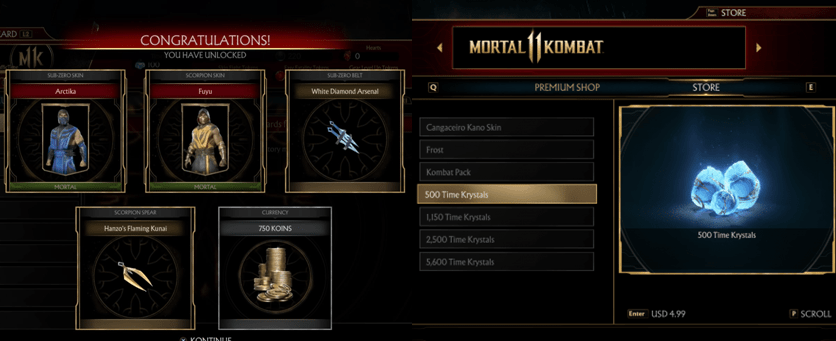
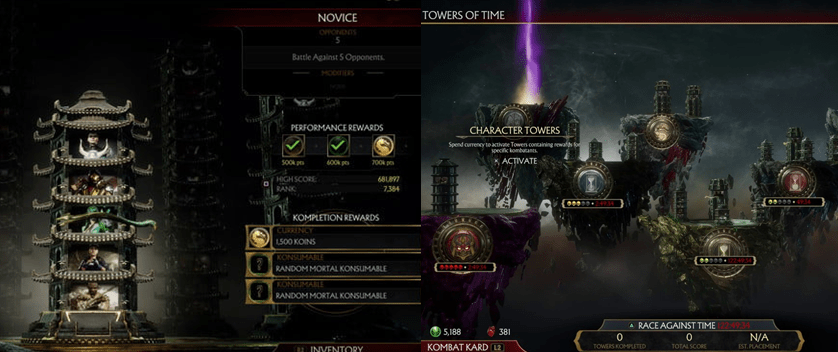




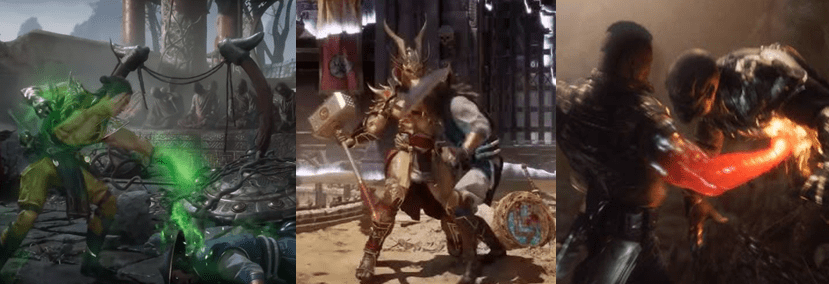
































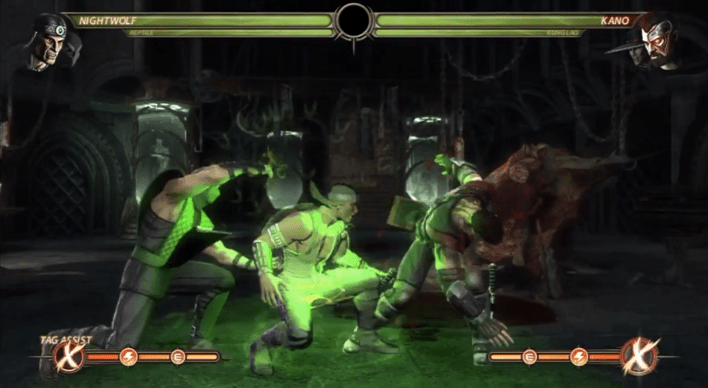































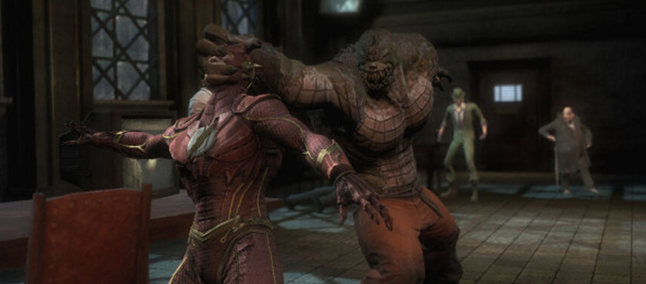




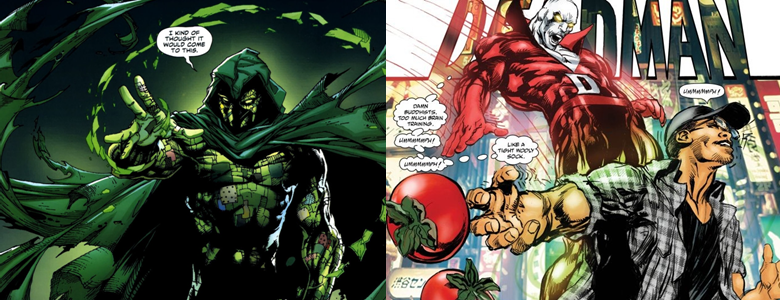









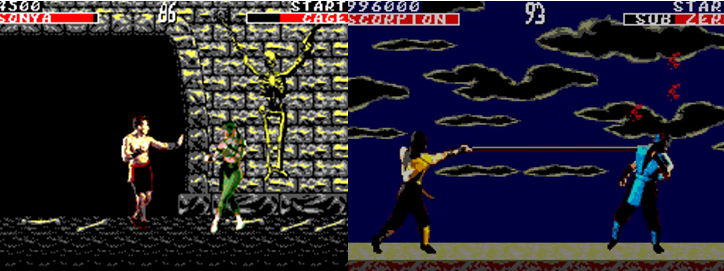











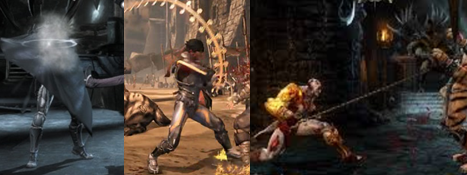

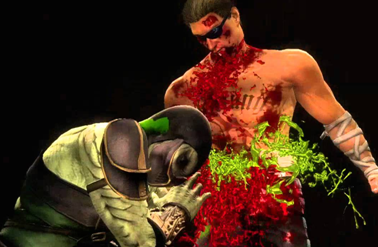
You must be logged in to post a comment.